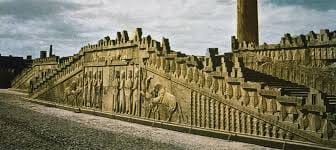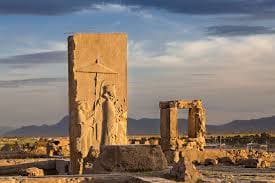Xerxes the Great
Xerxes I, also known as Xerxes the Great, was a prominent ruler of the Achaemenid Empire from 486 to 465 BCE. He succeeded his father, Darius I, and became one of the most notable figures in ancient Persian history. Xerxes’ reign was marked by significant military campaigns, architectural achievements, and political reforms, leaving a lasting impact on the Persian Empire.
Xerxes was born in 519 BCE to Darius I and his wife Atossa. He grew up in the opulence of the Persian court, surrounded by luxury and education. As a young prince, Xerxes received a comprehensive education, learning various subjects such as languages, history, and military tactics.
In 486 BCE, Xerxes ascended to the throne after the death of his father. One of his first acts as king was to suppress a revolt in Egypt, establishing his authority throughout the empire. To consolidate his power, he implemented administrative reforms, strengthening the central government and improving communication and infrastructure systems.
Xerxes’ most renowned military campaign was the invasion of Greece, known as the Second Persian War. Seeking revenge for the defeat of his father’s forces at the Battle of Marathon, Xerxes assembled a massive army and fleet to conquer Greece. In 480 BCE, he led his forces across the Hellespont and into Greece, advancing through Thrace and Macedonia.

The Persian army encountered significant resistance from the Greek city-states, notably at the battles of Thermopylae and Salamis. Although Xerxes initially achieved victories, the Persians were ultimately defeated at the Battle of Plataea in 479 BCE, marking a turning point in the war. This defeat significantly weakened the Persian Empire and secured Greek independence.
Aside from his military endeavors, Xerxes was also known for his architectural projects. One of his most ambitious undertakings was the construction of the Gate of All Nations, a grand entrance to the royal complex at Persepolis. He also commissioned the building of palaces, including the magnificent Hall of a Hundred Columns.
Xerxes’ reign was not without internal challenges. In 465 BCE, he was assassinated by Artabanus, the captain of his bodyguard, and a group of conspirators. His son, Artaxerxes I, succeeded him as the new king of Persia. Xerxes’ death marked the end of an era, and the empire faced a period of uncertainty and power struggles in the following years.

Xerxes the Great
Xerxes the Great left a significant legacy in Persian history. His military campaigns shaped the relationship between the Persian Empire and Greece, leading to long-lasting cultural and political repercussions. His architectural achievements showcased the grandeur and splendor of the Achaemenid Empire, contributing to the development of Persian art and culture.
Furthermore, Xerxes’ administrative reforms laid the foundation for a more centralized government, enhancing the empire’s stability and efficiency. His reign represented a period of cultural and artistic flourishing, as evidenced by the construction of monumental structures and the patronage of the arts.
In conclusion, Xerxes the Great was a prominent ruler of the Achaemenid Empire who left a lasting impact on ancient Persian history. His military campaigns, architectural achievements, and administrative reforms shaped the empire and influenced the course of events in the region. Despite his assassination, Xerxes’ legacy endures as a testament to the grandeur and complexity of the Persian Empire during his reign.
